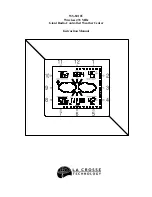
9
RF energy exposure standards and guidelines (if
appropriate)
Your Retevis walkie talkie complies with the following
RF energy exposure standards and guidelines:
•
United States Federal Communications Commission
(FCC), Code of Federal Regulations; 47 CFR part
2
sub-part J.
• American National Standards Institute (ANSI) /
Institute
of Electrical & Electronic Engineers (IEEE)
C95. 1-2005
• IEEE Std. 1528:2013 and KDB447498, Evaluating
Compliance with FCC Guidelines for Human Exposure
to Radio Frequency Electromagnetic Fields.
•
Institute of Electrical and Electronic Engineers
(IEEE)
C95.3-2002
•
International Commission on Non-Ionizing Radiation
Protection (ICNIRP)
• Ministry of Health (Canada) Safety Code 6 & Industry
Canada RSS-102.
• International Electrotechnical Com-mission
IEC62209-2:2010]
RF Exposure Compliance and Control Guidelines
and Operating Instructions
To control your exposure and ensure compliance with
the occupational/controlled environment exposure limits,
always adhere to the following procedures.
Guidelines:
•
User awareness instructions should accompany the
device when transferred to other users.
•
Do not use this device if the operational requirements
described herein are not met.
Operating Instructions:
• Transmit no more than the rated duty factor of 50%
of
the time. To Transmit (Talk), push the Push To
Talk
(PTT) button. To receive calls (listen), release
the
PTT button.
Transmitting 50% of the time, or
less, is
important because the radio generates measurable
RF energy exposure only when transmitting in terms
of measuring for standards compliance.
•
Transmit only when people outside the vehicle are at
least the recommended minimum lateral distance
away from a properly installed according to installation
instructions, externally mounted antenna.
•
When operating in front of the face, worn on the body,
always place the radio in a Retevis approved clip,
holder, holster, case, or body harness for this product.
Using approved body-worn accessories is important
because the use of Non-Retevis approved accessories
may result in exposure levels, which exceed the IEEE
/ICNIRP occupational/controlled environment RF
exposure limits.
•
If you are not using a body worn accessory and are
not using the radio in the intended use position, in
front of the face or at the body in the PTT mode or
alongside of the head in the phone mode, then ensure
the antenna and the radio are kept 2.5 cm
(one inch)
from the body when transmitting. Keeping the radio at
a proper distance is important because RF exposures
decrease with increasing distance from the antenna.
Hand-held Mode
•
Hold the radio in a vertical position with
the
microphone (and other parts
of the
radio
including the antenna)
atleast 2.5cm
































